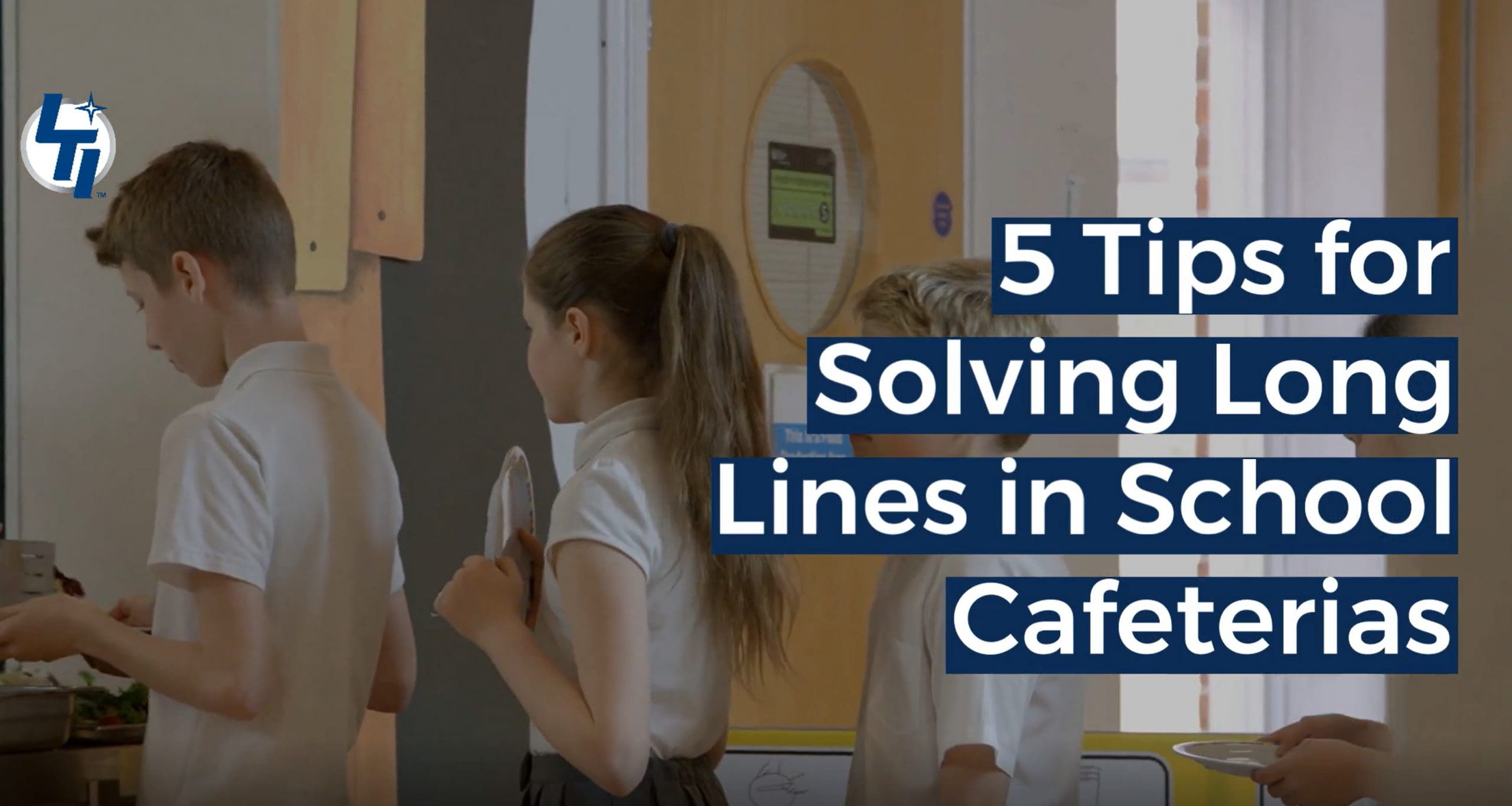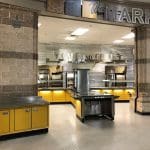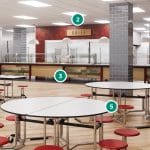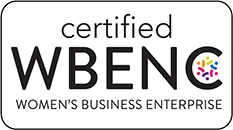See ideas for how to address long lines at the serving counter during lunch with…
5 Tips to Speed Up School Cafeteria Lunch Lines
Long lunch lines are often a struggle for K-12 schools. Short lunch periods and hundreds of hungry students descending on the cafeteria at once can create chaos. The resulting backup can leave students with only a few minutes to eat their lunch before the bell rings, leading many to skip lunch altogether.
So, how can you make school lunch lines faster?
Here are LTI’s top five tips for solving the problem of bottlenecks and long lines in K-12 cafeterias.
Tip 1. Enhance your existing serving equipment. Investing in serving equipment that allows a cafeteria to be more flexible with its food placement will not only help streamline the serving process, but also provide schools with increased menu options. The benefits of switching from hot to cold or frozen in under an hour when last-minute changes occur can be a lifesaver. And LTI’s QuickSwitch Hot-to-Cold-to-Frozen drop-ins have a self-contained design allowing for easy installation in any serving counter.
QuickSwitch allows schools to offer hot and cold foods side by side — and to switch between temperatures to accommodate the next meal — so everything can be served in a logical order.
A taco salad bar, for example, can be designed so students can get hot meat followed by cold toppings like tomato and lettuce and then top it with melted cheese, all without doubling back to a previous section of the line.
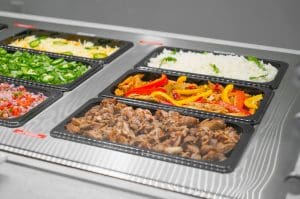
Tip 2. Add vertical serving options. To speed up the process of serving pre-packaged or pre-plated menu items, consider developing vertical serving into your line. Adding two-tier QuickSwitch glass
shelves to each lunch line can accommodate hot or cold foods without occupying valuable space on the main line.
Going vertical with selections can double the amount of product served in the same footprint, and food does not need replenished as often. For instance, a frost top can be placed above a cold pan, expanding the amount of display space for your selections. LTI provides several vertical configurations to fit your varying needs.
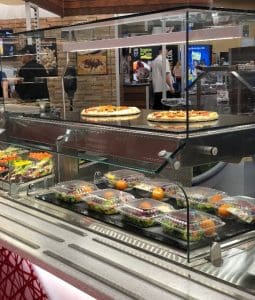
Tip 3. Plan for labor shortages. The current labor crisis is a problem that affects numerous industries, including the foodservice sector, and many still experience its impact. This issue is particularly difficult for schools, as they must ensure students receive nutritious meals regardless of any staffing shortages.
Prepare for labor issues in advance by incorporating more grab-and-go options, which can be pre-assembled and don’t require a staff member at the serving line. And if a worker calls out sick, with a QuickSwitch unit, you only need one operator to serve both hot and cold options, such as hot pizza and deli sandwiches, side-by-side.

Tip 4. Add points of sale. Sometimes the excessive queues are simply a matter of too much volume. Wherever possible, add additional points of service to increase access and decrease the likelihood of long lines forming.
For example, kiosk carts can be utilized. These carts can be conveniently moved to various locations around schools, such as hallways or courtyards, to create additional points of service. By positioning these stations in areas where students typically gather during lunchtime, the main cafeteria’s traffic can be reduced, leading to increased participation.
Another strategy is to transform an underutilized storeroom or an old dish room with a pass-through window into a distinctive serving area with a specific theme and menu. For instance, creating a New York-style deli-inspired serving area led to a substantial rise in participation.
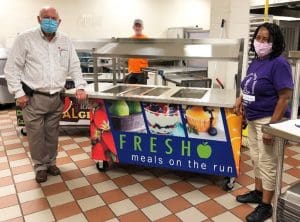
Tip 5. Utilize technology. Several issues can impede the efficiency of a serving line, such as inadequate registers, outdated equipment and students with insufficient funds in their accounts. One way to accelerate the serving process is by modernizing the equipment with self-service barcode scanners. This enables students to scan their account cards and food item barcodes, streamlining the process.
Additionally, integrating digital menus and online applications that facilitate e-payments and provide “low fund” alerts and automatic account replenishment can help ensure students always have sufficient funds in their accounts.
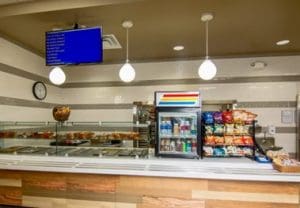
The benefits of efficiency in your school cafeteria lunch line
Addressing this issue in the right manner can bring about numerous benefits for both schools and students. Shorter wait times mean students have ample time to eat, unwind and socialize during the lunch period. Additionally, schools with shorter wait times can see a significant increase in meal program participation, often by as much as 15% or 20%, leading to a healthy boost in revenue for the school nutrition program.
For more ideas on improving the flow and function of your cafeteria, contact the K-12 dining specialists at LTI today.
